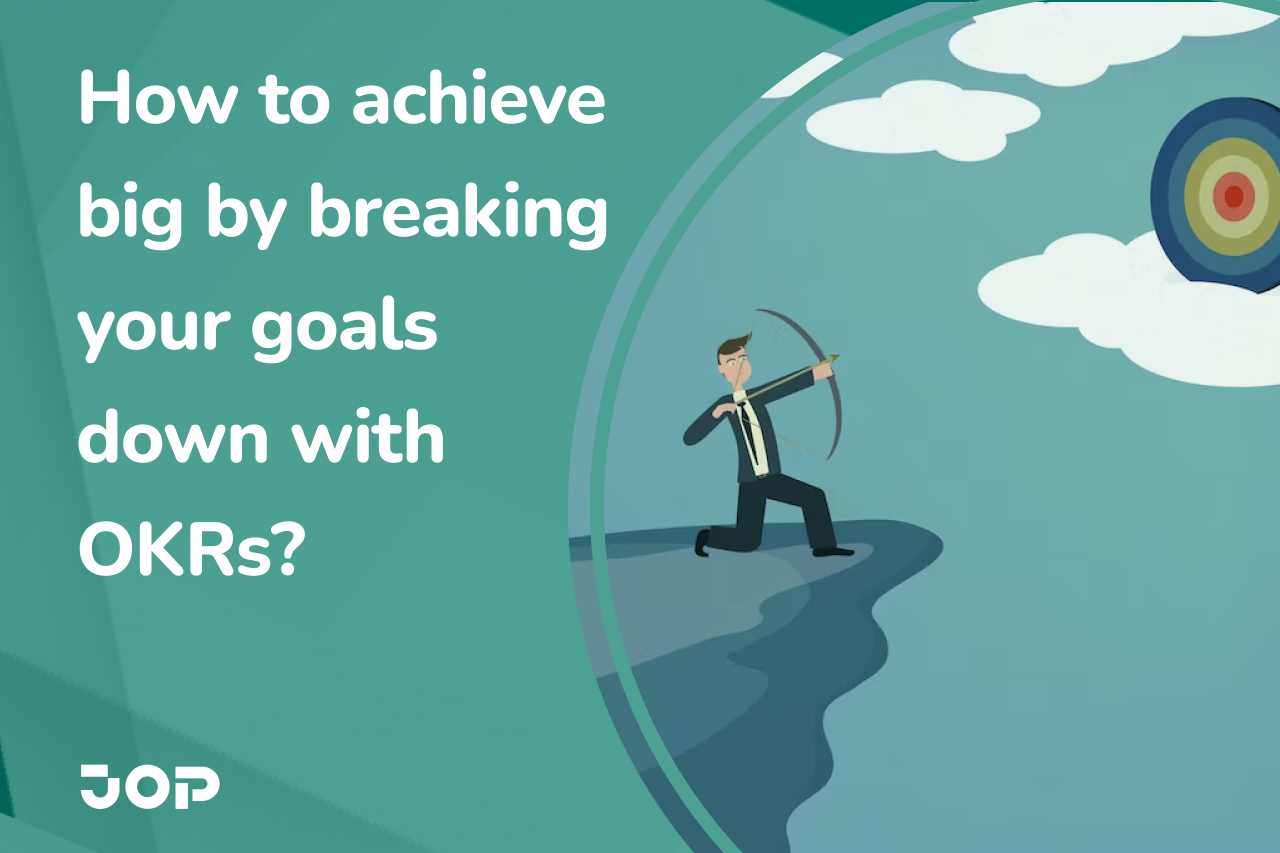If you think there is a standard formula to set goals, lay out a strategic plan, and execute it efficiently, then you will be disappointed. You may share similar objectives with other businesses, but your way of executing strategies sets you apart from the other companies. An OKR software tool can help streamline and personalize this execution process.
About 80% of the organizations don’t track their main goals.
When an organization tries to establish aspirational goals through tr
aditional goal-setting methods, they fail to align its people well with the business strategy. Aligning cross-functional teams with overall strategy and other departments is another big hurdle for leaders.
There is a better way to align your people towards ambitious goals and achieve more with time – the OKR framework. It helps you set your team and organization for better strategic planning and execution. Read more to find out how you do it.

Using the OKR framework to achieve aspirational goals
First of all, the OKRs help you establish meaningful objectives organization-wide. Everyone can be a participant in this framework. This allows them to align their jobs with relevant business objectives.
Discover some ways to enable your team to strategize and execute better to achieve big and bold business objectives.
Focus on strategy and purpose alignment
If your people are not aware of whether their work contributes to the top-level business objectives, they can’t align their tasks and strategy with the ultimate purpose of the business.
Only about 16% of the frontline managers understand the link between the different business priorities.
Your team may be working hard, but if they don’t work in the right direction, you will not achieve even the easier business objectives. You have to align strategic priorities with the main business objectives.
You can do this very effectively with the help of the OKR framework. Plan well and assign OKRs to everyone on the team. Doing this will enable you and your team to focus on aligning your strategy with meaningful business objectives.
Break down goals into cascading OKRs
Ambitious goals should make you and the team uncomfortable but not skeptical. Following an unorganized method of goal-setting and management can demotivate your team and ultimately lead to poor planning and execution. Make them believe it’s important for the business and achievable.
Their work becomes more meaningful when you make progress measurable and chunk the big objectives into action-oriented KRs. You can branch out main organizational objectives into department-wise and individual OKRs. This helps the team understand the importance of collective effort and better aligns them for better productivity.
Moreover, these OKRs are transparent and constantly reviewed in the check-in meetings held regularly with the team. The above practices ensure that your people direct their actions in the right direction.
Align everyone toward lofty goals
Merely 32% of the workers have a clear idea of their responsibility and actions in organizations that lack effective strategy execution.
Aspirational goal-setting is done with caution. You cannot set the benchmarks for achievement too high or low. With careful planning of OKRs comes the responsibility of aligning your teams with the main business objectives.
Break the ambitious goals into team-level and individual KRs to create organization-wide alignment toward critical business priorities. Achieving hard goals requires bigger efforts. Utilize the OKRs, continuous feedback, and conversations to align your cross-functional teams.
Tangible way to evaluate progress
People need routine guidance in their work to achieve organizational goals successfully. Employees who perform well constantly receive continuous feedback on their performance.
A simple data-based progress review is a very impactful way of evaluating if you are moving toward the right objectives. OKRs are evaluated with simple numbers. It guides people in their daily work and helps them start conversations with peers and managers.
People own KRs, and they are specific and measurable. You clearly mention who contributes to a particular KR and what metric it tracks. This simplicity in tracking what matters allows your people to progress in the right direction, i.e., toward critical company objectives and priorities.
Make organizational requirements clear
The more you are clear about what, when, and how much resources you need to allocate to your organization, the more chances you have to achieve your goals. Many leaders fail to decide on the support their organizations require to achieve main company objectives.
OKRs are specific, measurable, and clearly defined. This makes decision-making easier for the whole team. Well-defined and meaningful KRs help people to allocate resources more accurately.
Suppose your marketing team needs to use a new tool because it will significantly help them generate more leads, and it’s also their main OKR for a given quarter or year. Getting the leaders’ approval becomes easier, as it’s clearly mentioned in the KRs. Your people become more aware and intelligent of what needs to be prioritized and accordingly increase the support elements required to achieve it.
Achieving big starts with the reasonable and sound planning of goals and strategy. Talk to our OKR experts to align your strategy with your most important business goals.

Gaurav Sabharwal
CEO of JOP
Gaurav is the CEO of JOP (Joy of Performing), an OKR and high-performance enabling platform. With almost two decades of experience in building businesses, he knows what it takes to enable high performance within a team and engage them in the business. He supports organizations globally by becoming their growth partner and helping them build high-performing teams by tackling issues like lack of focus, unclear goals, unaligned teams, lack of funding, no continuous improvement framework, etc. He is a Certified OKR Coach and loves to share helpful resources and address common organizational challenges to help drive team performance. Read More
 Gaurav Sabharwal
Gaurav Sabharwal
